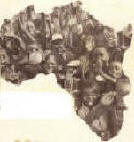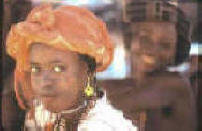“It's a Mad, Mad, Mad, Mad World;
"It's a Mad, Mad, Mad, Mad World:
You're
Not Bad, You're Sick. It's in the Book”
Joe
Sharkey
The New York Times
September
28, 1997,
EXPERTS warn that road rage is at epidemic levels on America's
highways. In a recent study, the American Automobile Association found a
51 percent increase since 1990 in incidents of motorists behaving in an
overtly hostile manner.
Crazy drivers, one might say. Precisely, says Dr. Arnold Nerenberg, a clinical psychologist in Whittier, Calif., who has a weekly radio program in which he discusses road rage as a certifiable mental illness. With advocates like Dr. Nerenberg and help from state and Federal research grants intended to combat the increase in highway fatalities attributed to aggressive driving, road rage may be a disorder whose time has come. Dr. Nerenberg and other therapists firmly believe that road rage is on its way to certification as an official mental disorder in the Diagnostic and Statistical Manual of Mental Disorders.
Hundreds
of Disorders
The
D.S.M, as insiders call it, is the 886-page clinical bible put out by the
American Psychiatric Association and used by psychiatrists and other
therapists to identify a set of behaviors as a mental illness. If road
rage is ultimately included in the revisions of the D.S.M. that are now
being reviewed, it will join more than 300 other disorders certified as
mental diseases.
|
The D.S.M., currently in its fourth edition, classifies serious mental illnesses like psychoses and schizophrenia, but critics say it also medicalizes many behaviors once considered traceable to character flaws.
Many new disorders develop powerful lobbies in the therapeutic and political worlds, critics say, because of the D.S.M.'s far-reaching influence on health-care spending. "Inclusion in the D.S.M. is the key that opens the strongbox; you cannot bill for treatment without using it," said Dr. Thomas S. Szasz, a Syracuse psychiatrist and the author of "The Myth of Mental Illness," the landmark 1961 book that argued that psychiatry consistently expands its definition of mental illness to impose its authority over moral and cultural conflict.
|
In the film, Falling Down, the lead character's violent behavior is triggered by a traffic-induced rage |
"There is a clear motive for defining new mental disorders and
marketing psychotropic medications for adults," said Herb Kutchins, a
professor of social work at California State University in Sacramento and
the co-author, with Stuart A. Kirk, of the forthcoming "Making Us
Crazy: D.S.M. -- the Psychiatric Bible and the Creation of Mental
Disorders," (Free Press). Mr. Kutchins noted that as recently as 18
years ago, the D.S.M. had only 106 mental disorders, while in the mid-19th
century, before the D.S.M., the Federal Government recognized only one:
idiocy/insanity. Now, he added, less money is available to treat those
with serious, debilitating mental illnesses whose sufferers have little
clout.
Legal Benefits
D.S.M.
certification of a disorder can also have legal benefits. Recently, after
a young woman in New Jersey was charged with suffocating her newborn baby
in a bathroom while attending her senior prom, some therapists suggested
that women charged with killing infants shortly after birth might be
suffering from "brief psychotic disorder with postpartum onset,"
which the D.S.M. says is characterized by "emotional turmoil"
following childbirth. (Postpartum syndrome has sometimes been invoked
successfully as a legal defense.)
To argue its way into the D.S.M., an aspiring disorder needs voluminous
field research indicating that it exists as a set of pathological symptoms
by a significant number of people. An ardent lobby among therapists is
essential, as is a campaign of publicity in the press.
|
Road
rage disorder is the current favorite in the pack of hopefuls
jockeying for position. "Road rage disorder has been put into
play," said Dr. Nerenberg. As he defines it, road rage is
"showing anger toward another driver" for something that
driver did on the road, and is characterized by such reactions as
rude gestures, hostile stares, shouting, horn-blowing and aggressive
maneuvering. "If they do that two or more times a year, it is
considered road rage -- a mental disorder," he said. Dr.
Nerenberg, who recently testified at Congressional hearings on
highway safety, said his research showed that more than half of
Americans suffer from road rage disorder at one time or another. |
Mr. Traffic discusses Road Rage |
Emerging Candidates
Another
candidate for certification as a mental illness is pre-menstrual dysphoric
disorder, which afflicts some women as a severe form of pre-menstrual
stress and "cripples them emotionally," according to a study
published last week in the Journal of the American Medical Association.
The study, which said sufferers can be significantly aided by taking an
antidepressant, was financed by Pfizer Inc., which makes the
antidepressant Zoloft.
Meanwhile, other therapists have recently made well-publicized claims that
attention-deficit disorder, once primarily diagnosed in children, has
begun showing up in large numbers of adult patients.
Some disorders lose political support and disappear as cultural forces
clash with therapeutic claims; homosexuality, for example, was listed as a
mental disorder until 1980. Another example is self-defeating personality
disorder, which used to be most often diagnosed in women. Among its
symptoms in the previous edition of the D.S.M.: choosing "people and
situations that lead to disappointment." It was dropped when the
latest D.S.M. appeared in 1994.
Still,
new hopefuls surface regularly. Among them is jury-duty disorder, defined
last year by the Bulletin of the Academy of Psychiatry and the Law as a
psychiatric disease reported by people who have suffered sexual problems,
heart palpitations, phobic reaction, depression and anorexia following
stressful jury duty.
And foreign disorders may be coming our way, Mr. Kutchins suggests. Last
year, for example, the British Medical Journal published a study detailing
lottery stress disorder, characterized by a "delusional belief"
that a ticket is a winner and a sharp "deflation of mood" when
it isn't.
The National Institute of Mental Health estimates that one-third of
Americans suffer from a clinical mental disorder in any given year and
that more than half will have one during their lifetime. Defenders of
current mental-health policy say accepting that removes the stigma from
seeking treatment.
Mr. Kutchins, however, said the price was high. "If full parity comes
about and only half of the people who would qualify for a D.S.M. disorder
seek professional treatment," he said, "the tab has been
estimated at about $75 billion a year."
Dr. Szasz says the D.S.M. has ingeniously made itself indispensable and
probably indestructible. "The diagnosis in the D.S.M. is absolutely
essential, because all mental health care and third-party insurance
payment depends on what code you put down," he said. "It's
completely impossible to get off this tiger."
* * * * *
”Dissociative
Fugue and Other Ailments”
Joe
Sharkey
The
New York Times
September
28, 1997
FEELING a tad testy when some idiot roars into your rear-view mirror to
tailgate an inch from your bumper? You might not get much sympathy from
your shrink, because road rage isn't yet listed in the Diagnostic and
Statistical Manual of Mental Disorders.
But give it time. After all, plenty of other disorders have made the
grade. The American Psychiatric Association, which puts out the manual,
claims that about half the population has (or will get) one or another of
the more than 300 listed illnesses. Maybe it's best to try to feel the
tailgater's pain, since your tormentor might not be rude, but suffering
from one of the certified disorders below.
Antisocial personality disorder: Among the symptoms: "Disregard for
and violation of the rights of others. . . . Impulsivity or failure to
plan ahead." Narcissistic personality disorder: "A grandiose
sense of self-importance. . . . Believes that he or she is 'special' and
unique and can only be understood by, or associate with, other special or
high-status people. . . . A sense of entitlement, i.e. unreasonable
expectations of especially favorable treatment. . . . Takes advantage of
others. . . . Shows arrogant, haughty behaviors or attitudes."
Attention-deficit/hyperactivity disorder: "Fails to give close
attention to details or makes careless mistakes. . . . Has difficulty
sustaining attention in tasks or play activities. . . . Does not follow
through on instructions. . . . Fidgets with hands or feet or squirms in
seat. . . . often acts as if "driven by a motor."
Dissociative fugue: An overwhelming urge for "sudden, unexpected
travel away from home or one's customary place of work."
Or consider "substance-related disorders" like these:
Caffeine intoxication:
which can lead to Caffeine-induced
anxiety disorder or
Substance-induced sleep
disorder.
Nicotine dependence:
the treatment of which can unfortunately lead to Nicotine
withdrawal disorder.
Or perhaps the menacing Road Warrior is suffering from a newer disorder
that the manual hasn't yet codified but recommends "clinical
attention" to, pending further study. These are examples:
Occupational problem: "Job dissatisfaction and uncertainty about career choices."
Acculturation problem:
"Problem involving adjustment to a different culture, (e.g.,
following migration)."
Phase of life problem:
"Examples include problems associated with entering school . . .
starting a new career . . . divorce and retirement."
Religious or spiritual
problem:
"Loss or questioning of faith. . . . Questioning of spiritual
values."
Malingering:
"Intentional production of false or grossly exaggerated physical or
psychological symptoms, motivated by external incentives such as
avoiding military duty, avoiding work, obtaining financial compensation."
This disorder is sometimes characterized by "lack of cooperation
. . . in complying with the prescribed treatment regimen . . . the presence of
Antisocial Personality Disorder." (See above.)
Personality Disorder." (see above).
* * * * *
More Sources on Road Rage . . .
Dolores E. Brien, Ph.D. Road Rage and Other Mental Disorders
Michael Fumento, Road Rage vs. Reality
And now there is PMDD . . .
Neil Osterweil, Women Behaving Badly?
* * * * *



